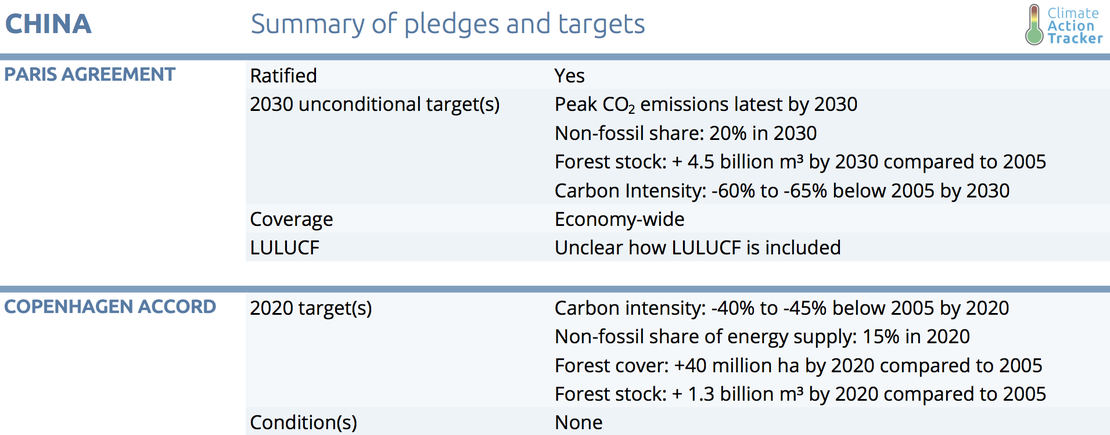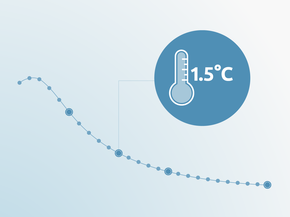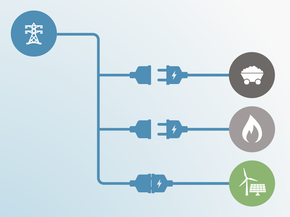Pledges And Targets
Paris Agreement
On 3 September 2016, China ratified the Paris Agreement and submitted its NDC to the UNFCCC, which includes a number of elements:
- Peak CO2 emissions by 2030, or earlier if possible;
- Increase the share of non-fossil energy sources in the total primary energy supply to around 20% by 2030; Lower the carbon intensity of GDP by 60% to 65% below 2005 levels by 2030;
- Increase the forest stock volume by around 4.5 billion cubic metres, compared to 2005 levels.
Among measures to implement enhanced actions on climate change, it also lists the following elements:
- Increase the share of natural gas in the total primary energy supply to around 10% by 2020;
- Proposed reductions in the production of HCFC22 (35% below 2010 levels by 2020 and 67.5% by 2025) and “controlling” HFC23 production.
2020 pledge
China’s 2020 pledge consists of the following elements:
- Overall reduction of CO2 emissions per unit of GDP by 40–45% below 2005 levels by 2020;
- Increase the share of non-fossil fuels in primary energy consumption to around 15% by 2020;
- Increase forest coverage by 40 million hectares and forest stock volume by 1.3 billion cubic metres by 2020 from 2005 levels.
We analysed the effects of all these targets – if achieved - on emissions, including the non-fossil target for 2020 and 2030. To do this, we assumed energy-related emissions until 2020 would follow current policy projections from the IEA WEO 2017 time series, which we adapted to reach the targets of 10% gas by 2020 and 15% and 20% non-fossil fuels by 2020 and 2030, respectively.

Further analysis
Latest publications
Stay informed
Subscribe to our newsletter






